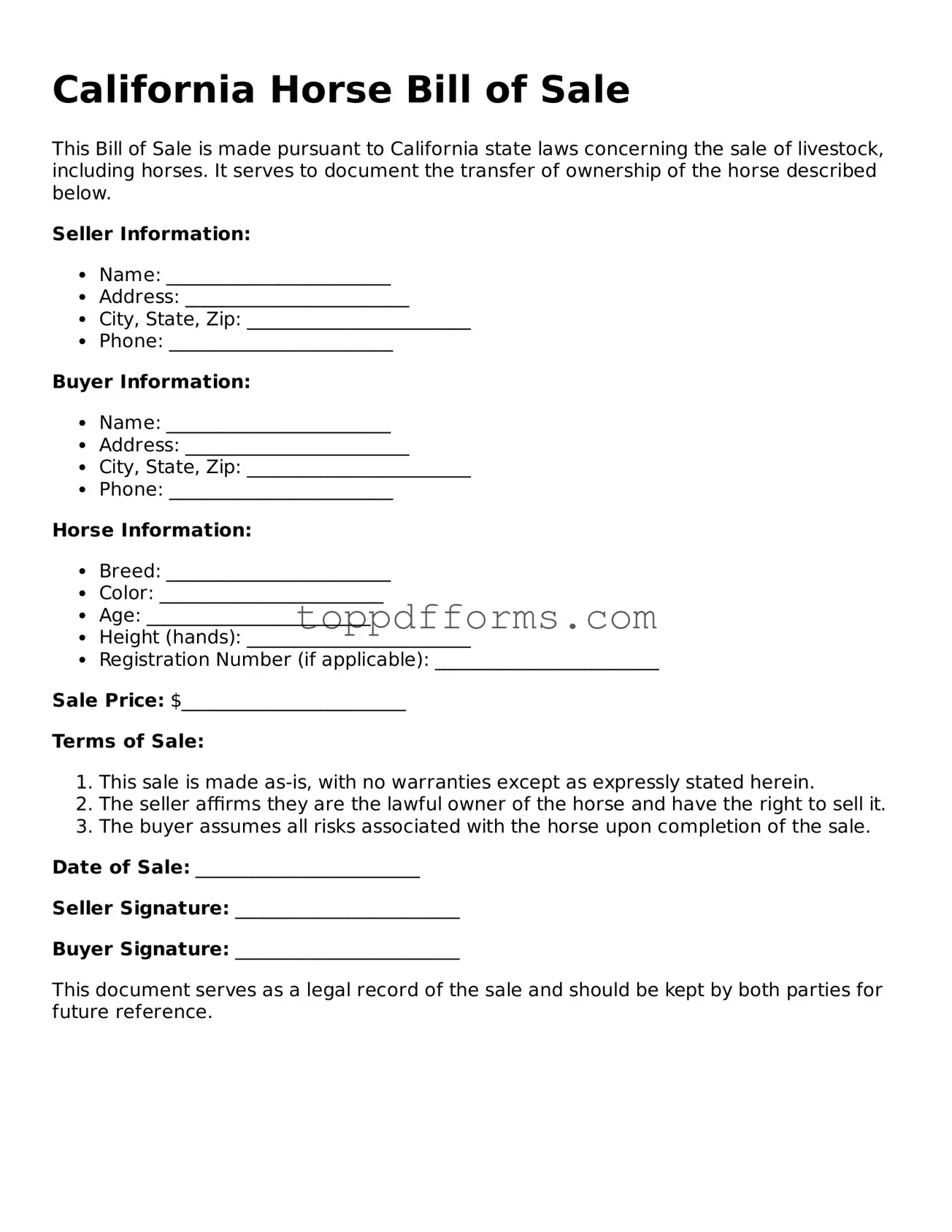What is a Horse Bill of Sale in California?
A Horse Bill of Sale is a legal document that records the sale of a horse. It serves as proof of ownership transfer from the seller to the buyer. This document is important for establishing the rights of the new owner and can be used for registration purposes or in case of disputes.
Is a Horse Bill of Sale required in California?
While a Horse Bill of Sale is not legally required in California, it is highly recommended. Having this document helps protect both the buyer and seller. It provides a clear record of the transaction and can prevent misunderstandings regarding the sale.
What information should be included in a Horse Bill of Sale?
A Horse Bill of Sale should include several key details. These include the names and addresses of both the buyer and seller, a description of the horse (including breed, age, color, and any identifying marks), the sale price, and the date of the transaction. Additionally, any warranties or representations about the horse's health or behavior should be noted.
Can I create my own Horse Bill of Sale?
Yes, you can create your own Horse Bill of Sale. Many templates are available online that can guide you in drafting one. Just ensure that all necessary information is included and that both parties sign the document. Alternatively, consulting with a legal professional can provide additional peace of mind.
Do I need to have the Horse Bill of Sale notarized?
Notarization is not required for a Horse Bill of Sale in California. However, having it notarized can add an extra layer of authenticity and may help if any disputes arise in the future. It can also be beneficial for the buyer when registering the horse with breed associations.
What if the horse has health issues or defects?
If the horse has known health issues or defects, it is crucial to disclose this information in the Bill of Sale. Transparency helps protect the seller from potential legal claims later on. Buyers should also conduct their own inspections or veterinary checks before completing the purchase.
Can a Horse Bill of Sale be used as a contract?
Yes, a Horse Bill of Sale can function as a contract. By signing the document, both parties agree to the terms outlined within it. This includes the sale price and any conditions related to the sale. If either party fails to uphold their end of the agreement, the other party may have legal grounds to seek recourse.
What should I do after completing the Horse Bill of Sale?
After completing the Horse Bill of Sale, both the buyer and seller should keep a copy for their records. The buyer may also want to register the horse with relevant organizations, using the Bill of Sale as proof of ownership. It's wise to store the document in a safe place, as it may be needed in the future.
